 Edwinstowe is at the Heart of Sherwood Forest today. It is to many, a magical forest with interesting secrets. First and foremost, it was the home of Robin Hood, possibly the most well-known, loved outlaw and hero who has captivated the imagination of many. The myths and legends that surround Robin are based on (social justice) robbing the rich to give to the poor.
Edwinstowe is at the Heart of Sherwood Forest today. It is to many, a magical forest with interesting secrets. First and foremost, it was the home of Robin Hood, possibly the most well-known, loved outlaw and hero who has captivated the imagination of many. The myths and legends that surround Robin are based on (social justice) robbing the rich to give to the poor.
http://www.mercian-as.co.uk/outlaws.html
Today, Sherwood Forest covers just over 1,000 acres. It is a Site of Special Scientific Interest (SSSI) and it is also under consideration to be a Special Area of Conservation (SAC) This is because it is a uniquely undisturbed ancient oak woodland which has created an internationally rare habitat. Pollen records show that there has been an unbroken cover of woodland here since the end of the last ice-age, 10,000 years ago.
The forest is well known for its abundance of wildlife, which includes many birds; owls, woodpeckers, redstarts, nuthatches, swallows, swifts, treecreepers, jays, blue tits, as well as bats, insects (which includes stag beetles), 200 species of spiders, harvestmen and the rarest false scorpion in Britain which lives under the bark of oaks.
https://www.rspb.org.uk
With its estimated 900 veteran oaks (600 years+) and a unique mix of old woodland and heathland Sherwood is a magical area to visit for all ages. No wonder that in 2014 the Major Oak was crowned the tree of the year by the Woodland Trust.
After the ice-age, due to enormous river systems in the area, sandstone was laid down (Bunter or Sherwood Sandstone). Heathers, lichens, birches, willows, elms, low growing shrubs and grassland covered the area. There is evidence of oak pollen from 7,000BC.
The Wildwood. At this time, the whole of Britain was covered in forest and wild animals; wolves, lynx, tigers, bears, boars, deer, ox, roamed the forest. The streams were home to fish and beavers. From 4,000BC there were agricultural settlements in Sherwood. Creswell Crags was the home of prehistoric hunter-gathers. A Bronze age stone axe was recently found at Laxton.
http://www.creswell-crags.org.uk
Romans settled in the area in the 1st Century AD. Much of the heathland originated from forest clearance by the Romans at this time. Our nearest Roman Settlement was between Budby and Gleadthorpe. Feld was a Roman name as was used in names such as Mansfield, Ashfield and Farnsfield.
The Angles and Saxons then invaded Britain and many farms and villages were established. Farming in the strip system (Laxton) was established and many trees were cut down as the demand for timber increased.
http://www.laxtonvisitorcentre.org.uk/Visitor%20Centre.htm
The Vikings during the 9th and 10th Century settled in the forest. The name ‘Sherwood’ was first recorded in 958AD when it was called Sciryuda, meaning ‘the woodland belonging to the shire’. Birklands is a Viking name “birch lund”. Other evidence of Viking place names ending is -by – and Old Norse suffix meaning village or homestead and thorpe, an old Danish word meaning small village or farm. Our nearest Viking site is in the woodland on the western edge of Sherwood Forest close to the Warsop Boundary Stone.Sherwood Forest was now a mixture of oak, elm, lime and birch woodland including areas of heathland with bracken, heathers, gorse and grassland.

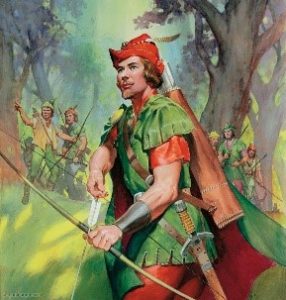
This was the landscape that Robin Hood would have known.
Edwinstowe (Edenstou) named after King Edwin of Northumbria (617-633) was a small settlement within the forest bounds. It was recorded at that time, “a church, a priest and four bordars (slaves working on the priest’s land) wood pasture half a mile long and half as broad.”
In 1086, Edwinstowe was recorded in the Domesday Book as being taxed 1.8 geld units and only 5 households.
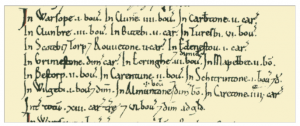
Edwinstowe was the mother church for surrounding villages.
The Normans introduced the ‘Forest Law’ in the 11th Century. Sherwood Forest (Shire–wood) was 100,000 acres and was approximately a fifth of the whole of Nottinghamshire. The area stretched from Edwinstowe right to the walls of Medieval Nottingham Castle. The forest was mainly birch and oak wood interspersed with sandy heath and rough grass land. It contained three Royal deer parks. The forest was referred to as Nottingham Forest. Two of the most famous areas or woods were; Birklands or Bilhaugh home to ancient veteran trees. There were also three Royal deer parks, Pittance Park, now called (Clipstone Park), Bestwood Park and Nottingham Park (Park Estate).
‘Forest Law’ was introduced to protect the forest and to encourage the breeding of game, including deer, wild boar and wolf. Edwinstowe folk were allowed in the forest with their pigs to root for acorns and gather brushwood but they could not cut down trees, hunt or allow dogs who had not been declawed, into the forest. If caught, penalties were severe including blinding, death and dismemberment. After 1217, punishment was less severe and it was mainly imprisonment or fines. Courts were held in Edwinstowe every six weeks. However, being an inhabitant of the forest meant that they were freemen who could marry by choice and inherit without permission.
St Edwin’s Day is on October 12th and an annual fair was granted in 1381, to be held in the churchyard.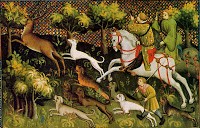
Few people know that the beginning of circumstances that led to the formation of the Magna Carta happened in Sherwood Forest, in 1215. The Magna Carta was a document that was forced onto the King of England to limit his powers by unchangeable laws and so defend people’s rights.
In 1334, the Vicar, John de Ryston broke the strict ‘Forest Law’ and was convicted and imprisoned at Nottingham for venison stealing.
In 1341, Henry de Edwinstow, king’s clerk obtained a Chantry (grant) of £10 for the church. Chantry – An endowment to cover expenses for the saying of masses and prayers, for the soul of the person giving the endowment. A chapel, altar, or part of a church endowed by a charity.
“Lythe and listin, gentilmen,
That be of frebore blode;
I shall you tel of a gode yeman,
His name was Robyn Hode.”
-A Gest of Robyn Hode

There are no written accounts to substantiate this. Was he a Saxon, Medieval ‘Super Hero’ who stood up against the Norman feudal system? We will never know, but we do know that Robin has captured the imagination of many which is evident by the fact that he has been the main character in over 100 films dating back to 1908. Films about, good and evil, heroic deeds, Kings and Queens of England, jailers, bad Sheriffs of Nottingham, Monks, priests, escapes and lovers’ trysts, as well as the last days of his life. Most of what we do know about Robin, was learnt from five surviving manuscripts of ballads, and poems, the earliest dating back to 1400.
7http://www.robinhoodlegend.com/early-ballads/
http://www.robinhoodlegend.com/robin-hood-movies/
The titles of some ballads and poems; ‘The Geste’, ‘Robin Hood and Monk’, ‘Robin Hood and Guy Gisborne, ‘Robin Hood and Curtal Friar’, ‘Robin Hood and the Knight’ and ‘Little John and the Sheriff of Nottingham’. These were spread from town to town and castle to castle by minstrels.
In 1337, Robin Hood is mentioned in William Langford’s, ‘The Vision of Peirs the Ploughman’, where Sloth says,
“I do not know my paternoster perfectly as the priest sings it but I know the rhymes of Robin Hood.”
The forest changed dramatically over the next 600 years especially as land was cleared for agriculture and many oak trees were used for buildings, ship building and furniture, as well as bark used for tanning.
Thousands of native Sherwood oak trees were cut down to build the Royal Navy’s ships from Henry VIII through to Nelson. 6,000 trees were used in the construction his ship, HMS Victory, 90% of these were oak.
St Paul’s in London and Lincoln cathedral were built using Sherwood oaks.
· 1807 May 16 : Auction/Robinson, Ollerton Hop Pole, bark of over 300 oak trees in Birkland.
· 1811 Jan 5: Auction/Robinson, Edwinstowe, by order of the Navy: Oak board etc. from Birkland & Bilhaigh.
-
1832, Christopher Thomson came to live in the village. He wrote the book called, “The Autobiography of an Artisan”. It contains much important information about Edwinstowe in the first half of the C19th. He started a friendly society named the Oddfellow’s Lodge to improve moral behaviour and educate the village inhabitants. Five weekly night classes were held in the Reading Room. On the 1st to the 6th of November 1841, there was a Feast Week called the Sherwood Gathering. In 1842, the second gathering took place in honour of, ‘Literature, Science, Art and Moral Worth”.
During Victorian times, Sherwood became a tourist attraction with coach tours becoming very popular. Some of the many visitors to the Major Oak below including one family’s story below:
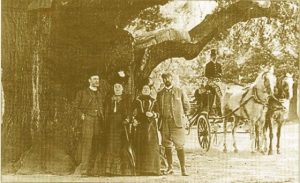 Visitors to Major Oak. They were allowed very close.
Visitors to Major Oak. They were allowed very close.
The photograph dates from around 1900 as in 1903 the local blacksmith Morley and his team placed chains on the tree to support it. Lead sheets were added to protect the trunk.
The four visitors, with their coachman in attendance, were probably connected with one of the big estates in the Dukeries -Welbeck, Rufford, Thoresby or Clumber.
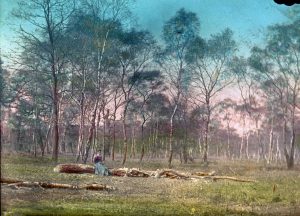
Visits to the forest were very popular. This photo has no date but the clothing style is about 1890s.
Tourism to Sherwood Forest was becoming very popular. During the Easter Bank Holiday, 1897, 4,000 train tickets were sold to visitors and 2,000 people enjoyed a luncheon at the local Dukeries Hotel. Donated the EHS in the 1960s
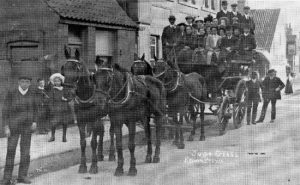
Dukeries Tours from the High Street

Major Oak c1922 with the Pepper Family and Motor Bikes
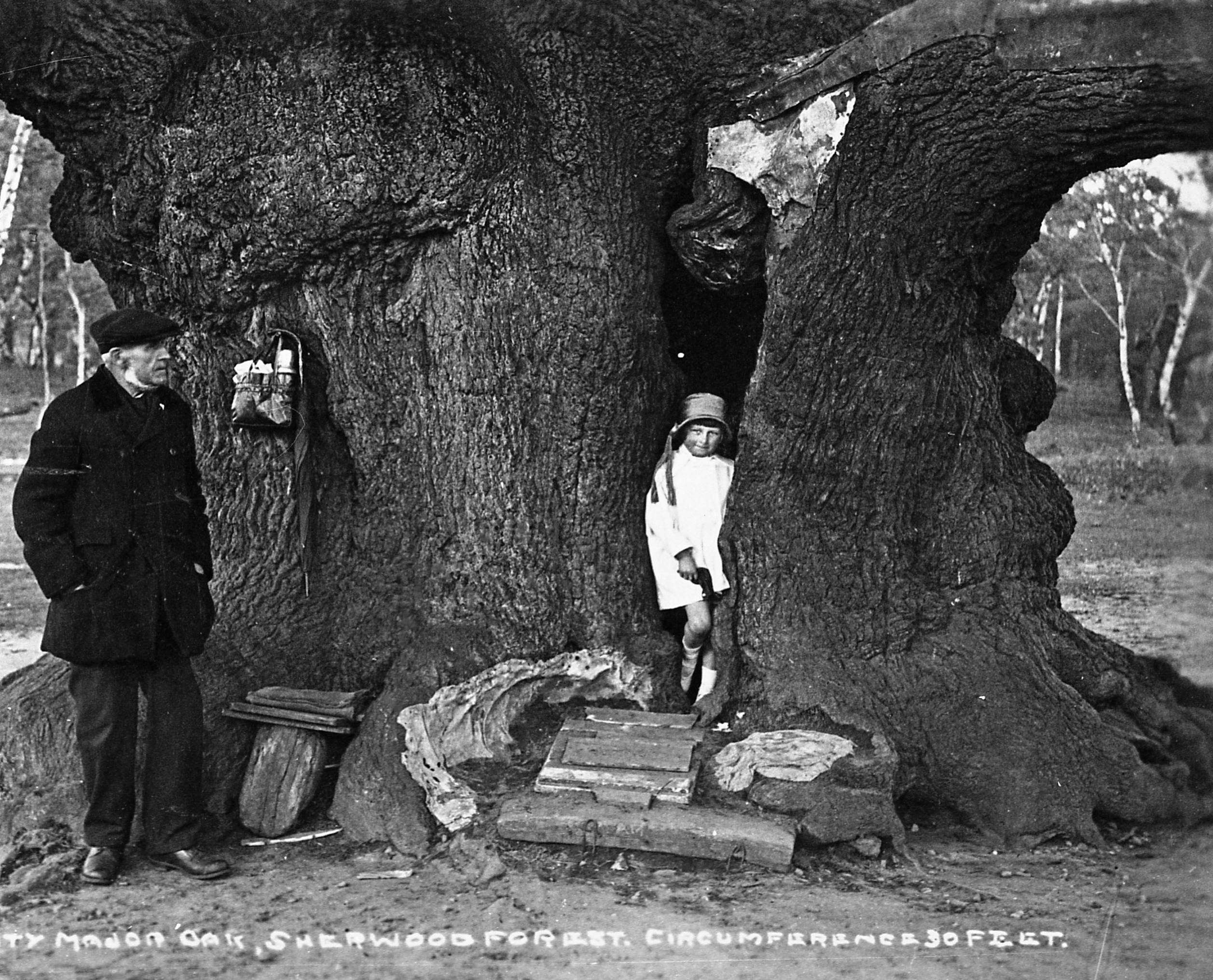
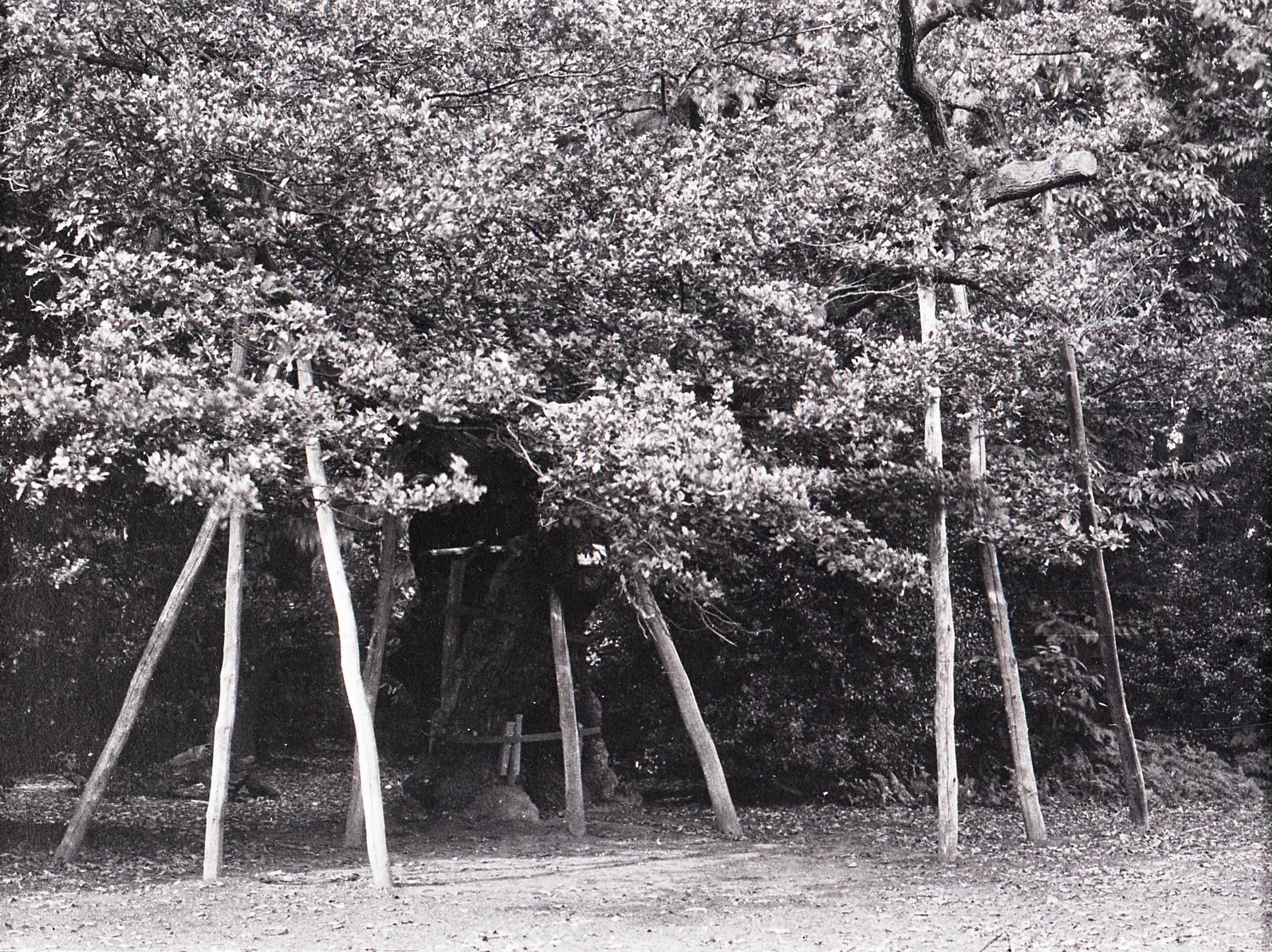
Below the communication we received from the family in the photo above.
“Adults: Extreme left, next to the old gentlemen who took the money, is Maude Pepper (my grandmother) next to her is Alexander Pepper (my grandfather). The other two adults were friends of my grandparents but I do not know their names.
Children: Extreme left, my Auntie Rita. The little boy with the large white collar is my father, Ronald. The little boy wearing the sailor suit is my uncle, Kenneth. The little girl with the large bow in her hair is the daughter of my grandparents friends and I do not know her name.
The whole group would have travelled by motorbikes and wicker sidecars from Leicester. I believe you can see part of one of the motorbikes in the photograph. It also explains why both of the men are wearing goggles on their foreheads.”
Shirley Aucott

Repairs by the Morley Family of Edwinstowe

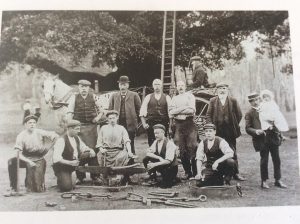
The chain being fitted by the Morley family. The man in bowler hat is the 4th Earl Manvers. Below the newspaper cutting 1959 reference to the photo.

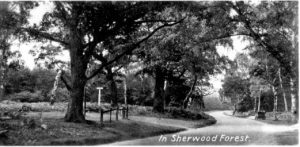
Entrance to Sherwood Forest
Industrialisation followed with the opening of the coal mines, this meant that further forest was lost.
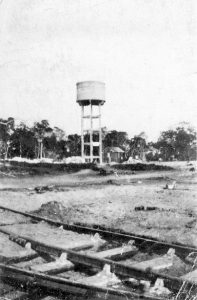

During WW11 the forest was requisitioned for a military camp, ammunition storage and army training areas (CAD Warsop). Later, a prisoner of war camp and a camp for displaced persons. 
http://www.neolithicsea.co.uk/cadwarsop/index.html

Huts used for accommodation for POW
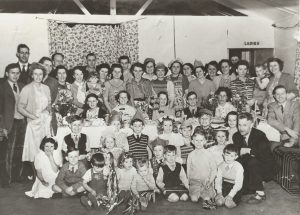
Coronation party in the British Legion Hut in the forest. It was one of the huts reused from the WW1 Army Camp at Clipstone. It is still used today.
– by kind permission of Hilary Godber – front middle row.
Thousands of visitors to Edwinstowe enjoy the forest landscape and walk to the Major Oak to see where supposedly Robin hid from the Sheriff’s men. Annually, his story is revived at the Robin Hood Festival. Legend says that Robin married Maid Marion at the door of St Mary’s Church which was a custom in the Medieval times. In the 1930s, The Dukeries Guide – ‘Where to go & What to See in Sherwood Forest’ stated;
“The quaint old village of Edwinstowe, hoary in the traditions of old Sherwood, is the virtual centre of the Dukeries from the visitors’ point of view.”
Whether myth or legend, fact or fiction, Sherwood Forest still holds many true secrets of its own waiting to be discovered.

News from the Sherwood Forest National Nature Reserve……
Summer is arguably the best time of the year to get out and discover the wildlife of the NNR. Although we know an awful lot about the wildlife of the forest, there is still much to learn and this year, the NNR managers have been busy surveying the forest to try and fill in some of the gaps in our knowledge about a number of specific animals.
Natural England helped to fund the first comprehensive survey of bats within the forest this year. With hundreds of old trees to roost in and lots of open space to fly and feed, we anticipated there would be lots of bat activity and this was confirmed by the dawn and dusk surveys which were carried out during the summer. Of the UK’s 16 resident species of bat, 11 were recorded as being active in the forest, which was an excellent total. This included rarer species such as the serotine and leisler’s bats. A number of old trees was also identified as supporting bat roosts, and this will need to be avoided by future tree management.
Sherwood Forest is renowned for its invertebrate life and particularly its rare beetles, spiders and moths. This summer has seen a survey of the Hazel Pot Beetle, which despite its name, is closely associated in the north of England with young birch and oak. This tiny beetle, which emerges from tiny ‘pots’ it produces on the ground, is only found in another 4 places in the UK and is a nationally rare species identified as a national priority for conservation. It was rediscovered last summer after an absence of 70 years, and early indications from this summer’s survey suggests a good population is present at Gleadthorpe Open. Similarly, the discovery of the Welsh Clearwing moth by Gary Joynt of the ranger team, at only its second site in England, has led to more survey work of the mature birch trees on which the moth depends. It appears to be widespread across the forest and has been found on Budby South Forest, too.
Understanding more about the forest’s special wildlife is important if we are to manage the NNR in the best way possible and help people understand, appreciate and enjoy the forest wildlife. Management of the forest which will help all of these animals is continuing and the longhorn cattle project goes from strength to strength; the cattle are back happily grazing the forest enclosures and this summer a few more are out on Budby South Forest, where they have been doing an excellent job grazing the heathland. The size of the herd is growing slowly and we hope that more of these animals will appear out on the forest in future summers.
You may have noticed the NNR signs appearing at various access points around Budby South Forest, advising visitors of the legal requirement under the Open Access legislation (the Countryside & Rights of Way Act 2000) to keep their dogs on a short lead when livestock and ground-nesting birds are present. Dogs are welcome on all parts of the NNR but it is every owner’s duty to make sure their dog is not a danger or nuisance to farm animals, wildlife or other people; and, by law, dogs must be controlled so that they do not disturb or scare farm animals or wildlife. On the area of open access land at Budby South Forest, dogs must be kept on a short lead through the summer when the cattle and sheep are present. This will help to ensure that the sheep and lambs grazing the reserve are not threatened and the special ground-nesting birds such as the woodlark, tree pipit and nightjar are not unwittingly disturbed by dogs, which can scare parent birds from the nests, resulting in eggs becoming cold and not hatching.
Steve Clifton, Natural England – On behalf of the Sherwood Forest NNR Partners – Forestry Commission, Nottinghamshire County Council, Thoresby Estates and Natural England.
This was an article in the Sept 2009 Acorn
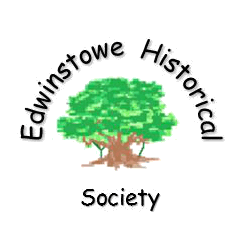 Edwinstowe Historical Society
Edwinstowe Historical Society